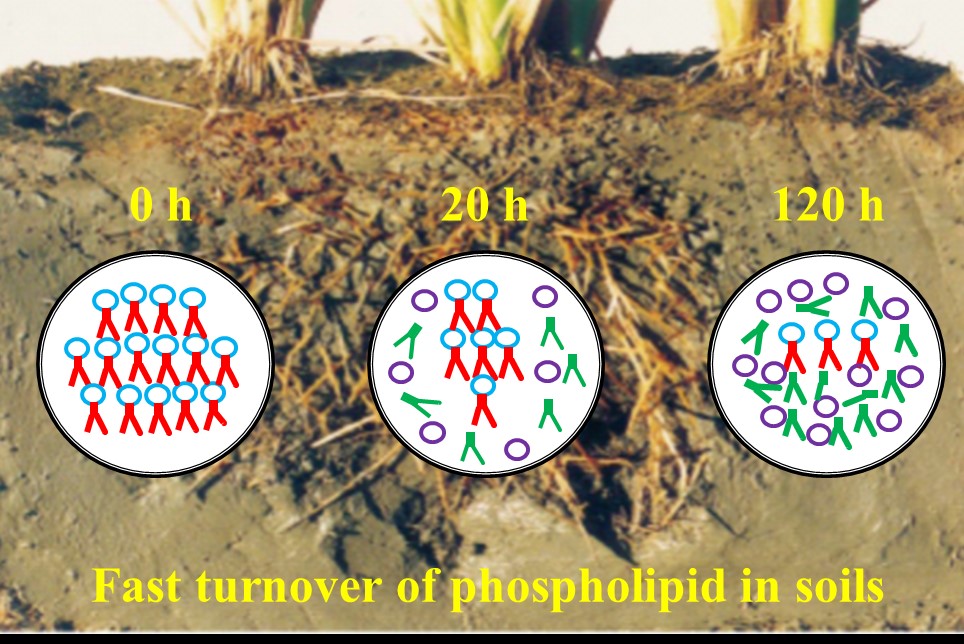Phospholipid fatty acid (PLFA) analysis provides an effective non-culture-based measurement for fingerprinting soil microbial communities and has been widely used to investigate the changes of soil microbial communities in different land uses or environmental conditions. PLFA analysis can provide accurate quantification of microbial biomass and can be more sensitive in detecting shifts in microbial community structure. Soil phospholipids are taken to be indicative of only living organisms since it is assumed they rapidly degrade after cell death but some other biomarkers, e.g., soil intact DNA, can even survive several months or years. Until now no systematic studies have focused on this classic hypothesis underpinning PLFA methodology and the turnover rates of free phospholipids in soil have never been accurately quantified.
The group led by Prof. Huai-Ying YAO from Institute of Urban Environment, Chinese Academy of Sciences reported for the first time that accurately quantified the turnover rate of free phospholipids using 13C labelling technique and PLFA analysis. They conducted a short incubation experiment by amending paddy soil with extracted phospholipids from bacterial (Methylocystis sp. And Escherichia coli) and fungal (Simplicillium subtropicum). The half-life (t1/2) for different phospholipids ranged from 14 to 27 h and the average t1/2 for total phospholipids was about 20 h at 25 °C but nearly double that at 15 °C. Moreover, phospholipids had a similar turnover rate in a soil with lower microbial biomass compared to a soil with higher microbial biomass.
In conclusion, this study gives strong support to the assumption that phospholipids released into the soil following microbial death are rapidly hydrolysed. Overall, this provides for the first time direct evidence for high turnover rates in soil through the analysis of specific 13C-labelled PLFAs and confirms the classic hypothesis that intact phospholipids represent living cells, necessary for the validity of the established PLFA methodology.
This work was mainly carried out by PhD student Yingying Zhang and Ningguo Zheng and Prof. Huai-Ying Yao, and recently published in Soil Biology and Biochemistry (2019, 135, 323-330) with title of “High turnover rate of free phospholipids in soil confirms the classic hypothesis of PLFA methodology”. This work was supported by National Natural Science Foundation of China, the National Key R&D Program of China (2017YFD0200102), and the Strategic Priority Research Program of the Chinese Academy of Sciences.

High turnover rate of free phospholipids in soil (Image by Huaiying YAO)